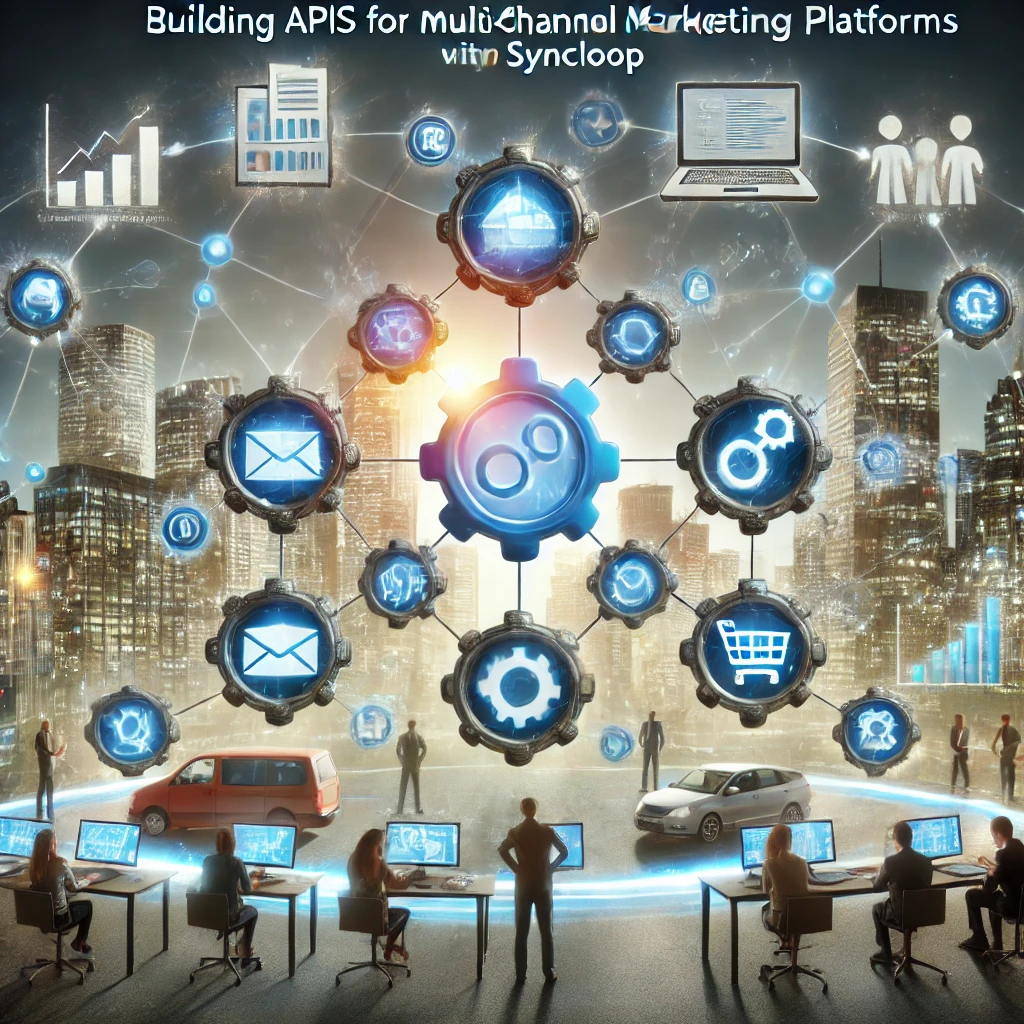Building APIs for Multi-Channel Marketing Platforms with Syncloop

Why APIs are Essential for Multi-Channel Marketing
APIs empower multi-channel marketing by:
- Connecting Platforms: Integrate CRM systems, ad networks, email tools, and social media platforms seamlessly.
- Automating Campaigns: Enable real-time data exchange and automation across channels.
- Improving Analytics: Aggregate data from multiple sources for unified reporting and insights.
- Enhancing Personalization: Deliver tailored marketing messages based on unified customer profiles.
Syncloop simplifies the process of creating APIs that address these requirements, making it easier to build efficient and scalable marketing solutions.
Key Features of Syncloop for Multi-Channel Marketing APIs
1. Dynamic Workflow Automation
Automate marketing processes, such as campaign scheduling, lead scoring, and data synchronization, with Syncloop’s visual workflow designer.
2. Data Transformation
Use Transformers to format and standardize data from various sources for seamless integration.
3. Real-Time Processing
Process and synchronize data instantly across channels, enabling real-time campaign adjustments and reporting.
4. Multi-Channel Integration
Easily connect with popular marketing platforms, such as Google Ads, Facebook, Mailchimp, and HubSpot.
5. Monitoring and Analytics
Track API performance and campaign data in real time to optimize results.
6. Secure Communication
Protect sensitive customer data with encryption, token-based authentication, and role-based access controls.
Steps to Build Multi-Channel Marketing APIs with Syncloop
Step 1: Define API Requirements
Identify the core functionalities required for your marketing platform, such as:
- Campaign management.
- Data synchronization with CRM and analytics tools.
- Integration with advertising and social media platforms.
- Real-time reporting and analytics.
Step 2: Configure API Endpoints
Set up endpoints in Syncloop for key features, such as:
- /campaign/create for creating marketing campaigns.
- /data/sync for synchronizing customer data.
- /analytics/report for fetching campaign performance metrics.
Step 3: Automate Marketing Workflows
- Use Syncloop’s workflow automation tools to:
- Trigger campaigns based on user actions or external events.
- Synchronize leads and customer data across systems.
- Schedule and publish content automatically across multiple channels.
- Incorporate conditional logic to personalize campaigns based on customer profiles or behaviors.
Step 4: Integrate Data Sources
- Connect Syncloop to marketing tools and data sources, such as:
- CRM systems (e.g., Salesforce, Zoho).
- Social media APIs (e.g., Facebook Graph API, Twitter API).
- Email marketing platforms (e.g., Mailchimp, SendGrid).
- Use Transformers to standardize and merge data for consistency.
Step 5: Monitor and Optimize
- Use Syncloop’s monitoring tools to track:
- API usage and performance.
- Campaign metrics like open rates, clicks, and conversions.
- Analyze real-time data to refine marketing strategies and improve ROI.
Step 6: Secure API Operations
- Implement role-based access controls to restrict sensitive operations to authorized users.
- Encrypt all data transmissions to protect customer information.
- Monitor access logs to detect and respond to potential security breaches.
Real-World Applications
1. Omnichannel Campaign Management
- Use Case: Coordinate marketing campaigns across email, social media, and SMS.
- Features Used: Workflow automation, data transformation, multi-channel integration.
2. Customer Data Synchronization
- Use Case: Sync customer profiles between CRM, analytics, and marketing platforms.
- Features Used: Data transformation, real-time processing, monitoring tools.
3. Personalized Marketing
- Use Case: Deliver tailored content and offers based on user preferences and behaviors.
- Features Used: Conditional workflows, secure communication, multi-channel integration.
4. Performance Analytics
- Use Case: Aggregate campaign data for unified reporting and actionable insights.
- Features Used: Real-time monitoring, API endpoints for analytics, data standardization.
Best Practices for Multi-Channel Marketing APIs
- Prioritize Scalability: Design APIs to handle growing data volumes and user interactions.
- Leverage Automation: Minimize manual tasks with automated workflows.
- Ensure Data Accuracy: Use transformers to clean and standardize incoming data.
- Monitor Continuously: Use real-time insights to optimize campaigns and address issues proactively.
- Secure Customer Data: Protect sensitive information with encryption and robust authentication.
Why Choose Syncloop for Multi-Channel Marketing APIs?
Syncloop offers a powerful platform for building and managing APIs tailored to multi-channel marketing. Its advanced tools for workflow automation, data transformation, and real-time monitoring enable developers to create seamless, scalable, and secure marketing solutions.
Conclusion
Multi-channel marketing platforms rely on efficient APIs to deliver personalized campaigns, synchronize data, and provide actionable insights. Syncloop simplifies the complexities of building and managing these APIs, empowering businesses to drive impactful marketing strategies. By leveraging Syncloop’s features, you can create APIs that elevate your marketing platform and deliver exceptional results.
Back to Blogs